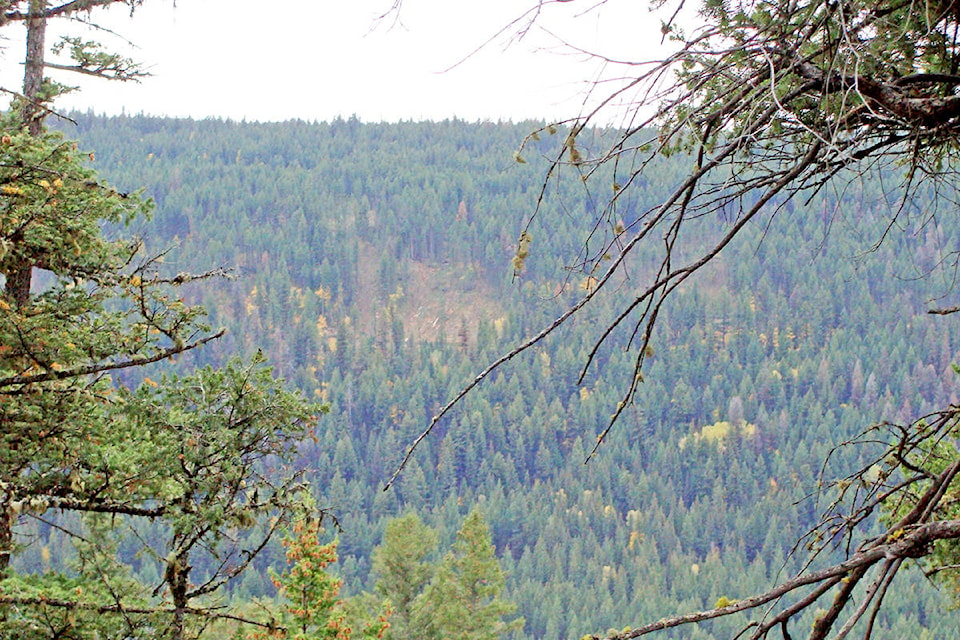Jim Hilton
Special to the Tribune
Now that the rains have come the logging contractors working in Chimney Valley can return to more regular hours of work.
During the high wildfire hazards in August the Ecolink crews were starting long before sunrise to take advantage of cooler night time temperatures and lower fire dangers. Ecolink is the main contractor working for Alkali Lake Resource Management (ARM) which manages a number of land-base tenures and licences for the Esk’etemc First Nation at Alkali Lake.
I think for most of us living in the valley it was good to see that Fir bark beetle outbreak was finally being addressed.
I live across the valley and have noticed a steady increase in red trees for the past 10 years with a noticeable spike in the last five years. We have enjoyed the pristine view since moving here in 1978, but with the threat of wildfires and the increasing beetle populations it seems appropriate that some preventative measures are taking place.
The area being harvested is part of the new addition to the Esk’etemc community forest which is north of the existing community forest, roughly east of the Fraser River and south of Highway 20.
Read more: Esk’etemc hosts meeting with government personnel
The area being logged now is on the north facing slope above Chimney Creek.
An access road is being constructed about mid slope running along the contour up to the old growth management area above the Stafford Ranch.
The main purpose is to allow the harvest of Fir bark beetle trees before the next flight but it will also allow future control as well as provide access in case of wildfires. Thanks to Darren Stanislaus for providing information and maps of the road location and new addition to the community forest.
Harvesting in the area may also include a fire break which will help control a fire from the south which will assist the natural break of the hay fields and Highway 20.
The logging contractor estimates that about 85 loads will be removed this year with more depending on the success of the beetle control this year and more if the area is used as a firebreak in the future.
According to Ken Day, who is involved with the wildfire mitigation for the Williams Lake and area, the Chimney Valley logging along with work around the BC Hydro lines in the area could be part of the final plan which should be available for the public sometime in November of this year.
As always there is a concern for water control especially on these steep slopes using conventional logging equipment. Careful planning and use of culverts, ditching and water bars will help prevent erosion but flash floods and unstable soils always pose a potential problem.
As a result of the 2017 wildfires in the Clinton/Cache Creek area the landslides that occurred this summer along Highway 97 were not a surprise.
The flash flood near Lee’s Corner this summer was no doubt a related to the Hanceville fire.
While harvesting on steep slopes has some risks the alternative of losing the entire forest to beetles or wild fires would appear to be a much worse scenario.
Read more: Highway 20 single-lane due to flash flooding near Lee’s Corner
Jim Hilton is a professional agrologist and forester who has lived and worked in the Cariboo Chilcotin for the past 40 years. Now retired, Hilton still volunteers his skills with local community forests organizations.
news@wltribune.com
Like us on Facebook and follow us on Twitter
